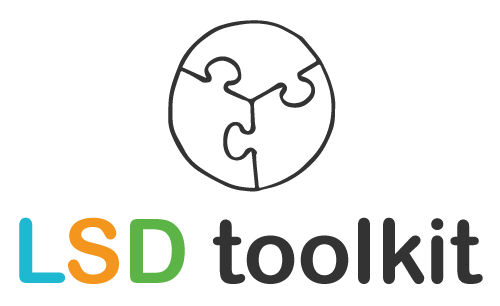The microstructure What, So What, Now What? (3W) is often used unconsciously in meetings. Especially with regard to the part ‘So What?’ (WTF!). The only difference is that we are now structuring it in time. In three logical steps we arrive at concrete solutions and actions for a problem.
METHOD
- Give a brief explanation and make small groups of 5-7 people.
- Step 1: WHAT?
– Participants only reflect on what happened. What did he / her notice? (1 minute)
– Then discuss this in a small group (5 minutes)
– Collect the (three) most appealing insights per small group
– Share this plenary with the whole group
– Reduce to a maximum of five most important insights (with dotvoting for example) and write these on a whiteboard - Step 2: SO WHAT?
– Briefly explain what the step entails
– Individual session: Why is this important? What patterns do I see? Which hypothesis can I make? (1 minute)
– Discuss in the small group ((5 minutes)
– Share plenary with the whole group
– Bring down up to five most important insights (with dotvoting for example) and write them on a whiteboard - Step 3: NOW WHAT?
– Individual: Which next steps are logical (1 minute)
– In the small groups you discuss the solutions, actions and steps that have been devised (5 minutes)
– Discuss the most important insights of each small group in plenary - The letter. Discuss the process level session with the group.
If the group is larger than 12-15 people, break it up into several groups.
IN PRACTICE
I (Gerjon Zomer) used this microstructure at an ITops meeting. The IT managers were struggling with the phasing out of a platform and the legal (contractual) consequences. The What? was difficult for the group. What exactly was the problem? It soon became clear that there was no overview. Nobody had the right knowledge to oversee the entire scope. So we have the most important What? made.
At the So What? showed that the legal consequences were overestimated. One of the managers was able to show an e-mail in which compliance was guaranteed. At the same time it turned out that the IT impact was underestimated. Switching off the system would have enormous consequences for the CRM system. This was completely overlooked. Here, too, overall direction turned out to be a problem.
At the Now What? it was decided to perform a system analysis to better map out the technical infrastructure. Because if we have overlooked 1 system, why not more systems? It was also decided to appoint a director for the time being, a leader of the pack who would supervise the entire process.
Tip: The disadvantage of this liberating structure is that it sometimes produces too long a list of solutions. Just like a retrospective, it is good to focus. That is why I let the group choose the 3-5 most important insights in a plenary session (usually by hand or dot vote) and translate them into concrete actions. With scrum teams, these actions are placed on the backlog.
Read here the complete instruction of the liberating structure What, So What, Now What? .

1,512 thoughts on “What? So what? Now what?”